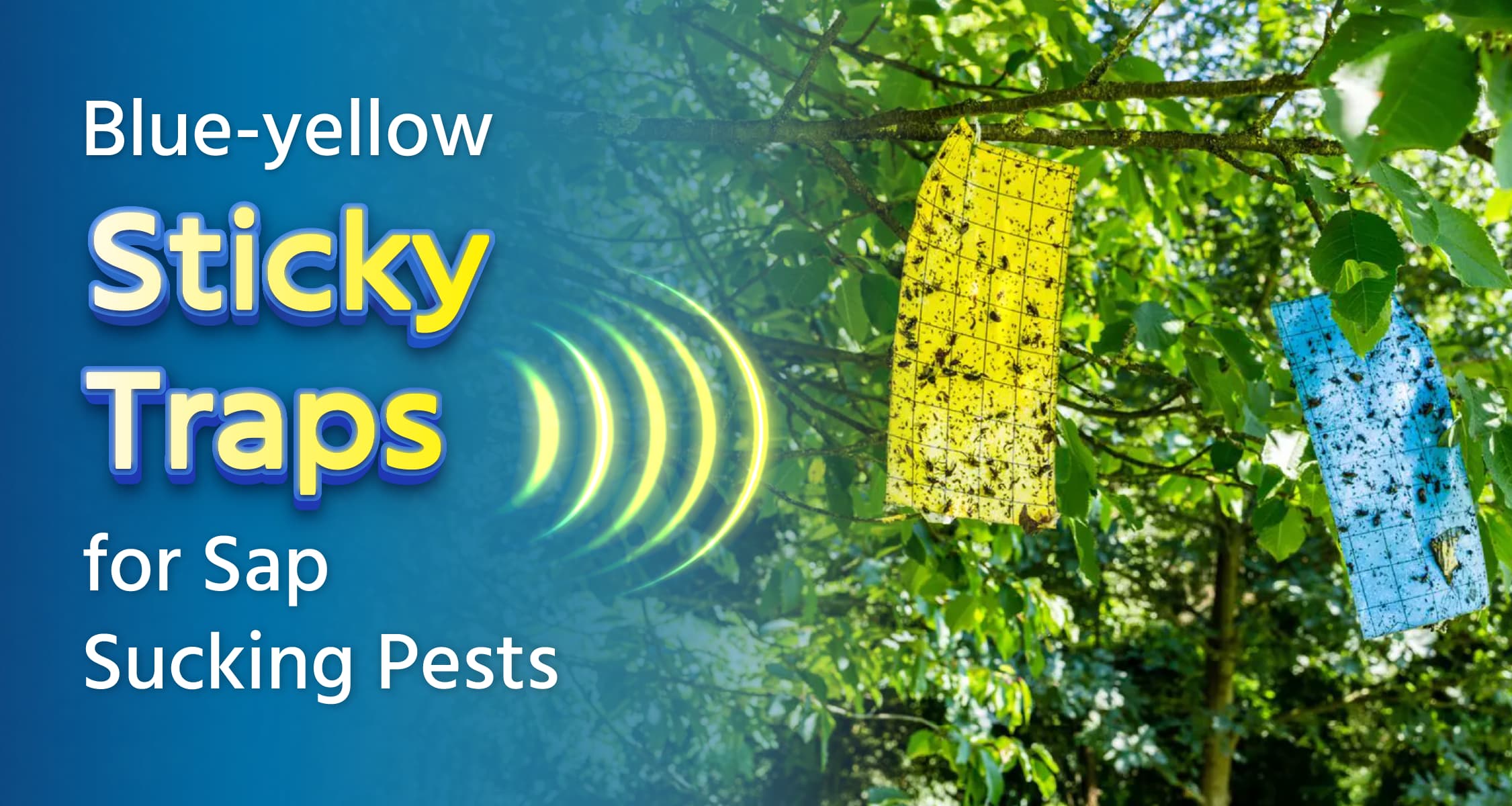Sticky Traps: An Important Measure in Protecting Crops

In agriculture, implementing various technical measures is crucial for enhancing crop protection. While farmers commonly resort to chemical-based pesticides to combat pests, this practice can have detrimental effects on both crop health and human well-being. Moreover, the high costs associated with pesticide usage pose economic challenges. Without proper precautions, pesticide application can lead to numerous side effects. In light of these concerns, the utilization of sticky traps emerges as a promising alternative for farmers. Not only are sticky traps more cost-effective compared to pesticides, but they also offer a safer approach to pest management. In the following sections, we will go through the details of utilizing sticky traps in agriculture.
What is a Sticky Trap?
Sticky traps are valuable agricultural tools designed to capture small and large insects or pests infesting crops. Consisting of a thin sheet coated with adhesive on both sides, these traps attract insects with their appealing color and surface, causing them to become stuck upon contact. Strategically placing sticky traps around crops helps shield them from pests, ultimately enhancing farmers' productivity.
Benefits of Sticky Trap
- Pest Control: Various pests can be easily controlled.
- Crop Loss Minimization: Crops can be protected from the harmful effects of pesticides by using sticky traps. As a result, crop losses are reduced by 40 to 50%.
- Cost-effective: Sticky traps are economical to use compared to other insecticides. They are easy to install and maintain and thus cost less is incurred.
- Safe for Crops and Soil: Pesticides reduce the damage caused to crops and soil.
- Minimized Labor Cost: Reduces the cost of labor for spraying pesticides.
- Production and Quality: Due to the control of pests, both the productivity and quality of crops increase.
- Eco-friendly: As there is very minimal use of harmful chemicals, it has no bad effect on the environment.
Various Colors and Uses of Sticky Traps
- Yellow Sticky Trap: It is mainly used in vegetable crops. This can attract insects like white flies, aphids, leaf miners, etc., and trap them to eliminate. The specialty of yellow sticky traps is that they can catch even the prejudicial pests of vegetables, which can destroy the crop even before the pest infestation occurs.
- Blue Sticky Trap: Blue sticky traps are used in paddy, flower, and vegetable crops. It is mostly used to control thrips. Using blue sticky traps in paddy crops affected by thrips infestation can give good results.
- Black Sticky Trap: Black sticky traps are used against tomato pests. This trap can attract and destroy almost all types of insects or pests that attack tomato plants.
- White Sticky Traps: White sticky traps can be used against fly beetle pests and bug pests in fruits and vegetables. These insects get attracted to the white sticky trap and stick to it. These traps can save crops from substantial damage that can happen.
- Red Sticky Trap: Red sticky traps are used to control leaf hoppers, spider mites, broad mites, and gall midges. They are mostly used in greenhouses and indoor/shade gardens. It is mainly used to control the pear blight beetle. This insect attacks apple, cherry, and pear trees and lays its eggs by boring holes in the fruits.
- Orange Sticky Trap: It is mainly used to control carrot flies and white flies. It is used externally from March to October.
How to Make a Sticky Trap at Home?
- It is very easy to prepare sticky traps at home and it does not cost much.
- To prepare sticky traps at home, first take a colored plastic sheet as per your requirement.
- Cut colored plastic sheets into square shapes.
- Make the cut plastic sheet sticky by applying castor oil or mobil.
- The sticky traps are ready to be installed in the field. Plant it slightly above the crops.
- Precautions While Using Sticky Traps
- Place the sticky trap in a place where the number of insects or pests is high. This aids in attracting and trapping maximum number of insects that get destroyed.
- Check the sticky trap every few days to make sure the sticky substance is working properly.
- Along with this, keep changing the old sticky traps full of insects.
- Place sticky traps 1 to 2 feet above crop height.
Have you ever used sticky traps in crops? Share your response and experiences with us in the comments section below. For more such insightful content, make sure to follow the 'Desi Jugaad' channel now. If you find this information valuable, don't forget to like and share this post. Your engagement and support mean a lot to us!
Frequently Asked Questions (FAQs)
Q: How many sticky traps should be used per acre of field?
A: Use 4 to 6 sticky traps per acre of field.
Q: Which color sticky trap should be used in crops?
A: Mainly yellow, blue, white, and black colored sticky traps are used in crops.
Q: What types of pests can be controlled with sticky traps?
A: Flying insects can be easily controlled with sticky traps. These pests include thrips, white flies, aphids, jassids, fly beetle insects, leaf hoppers, spider mites, broad mites, gall midge, carrot flies, etc.
जारी रखने के लिए कृपया लॉगिन करें

फसल चिकित्सक से मुफ़्त सलाह पाएँ
